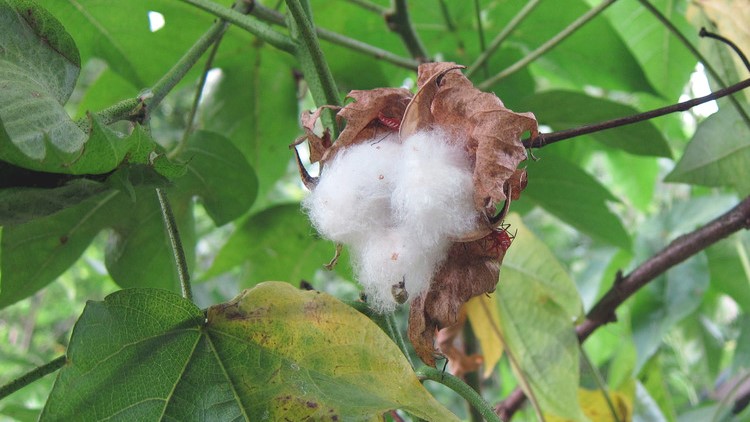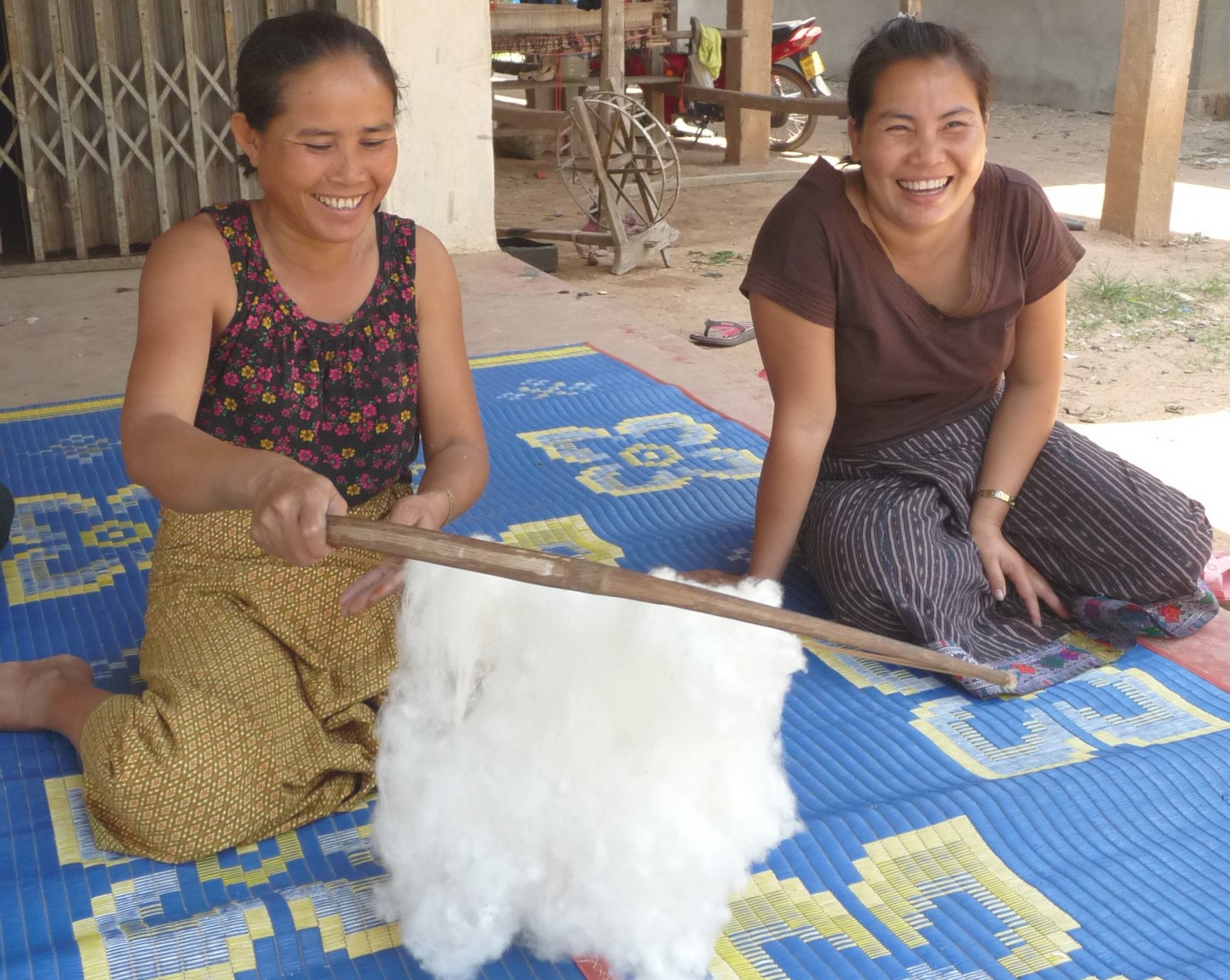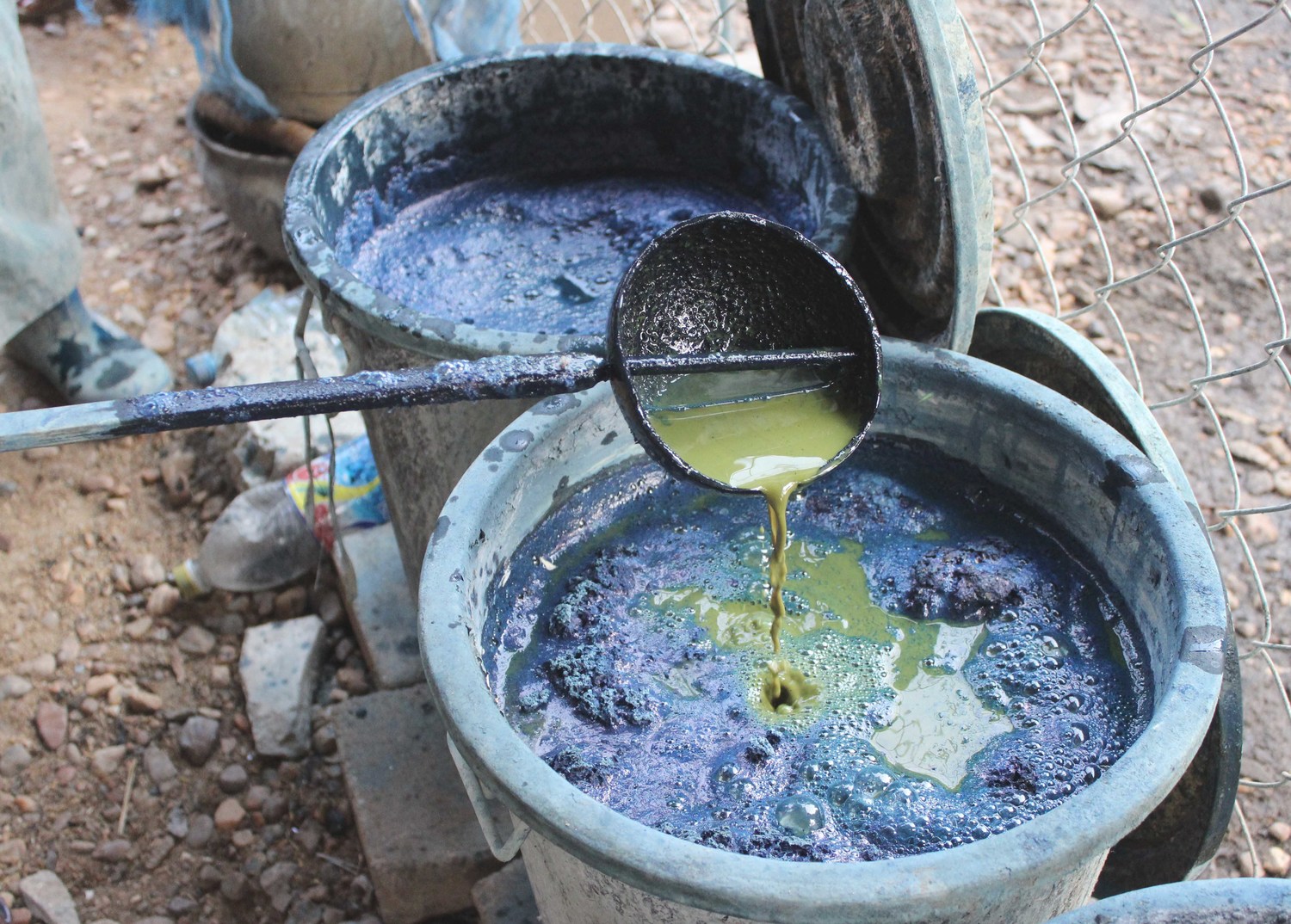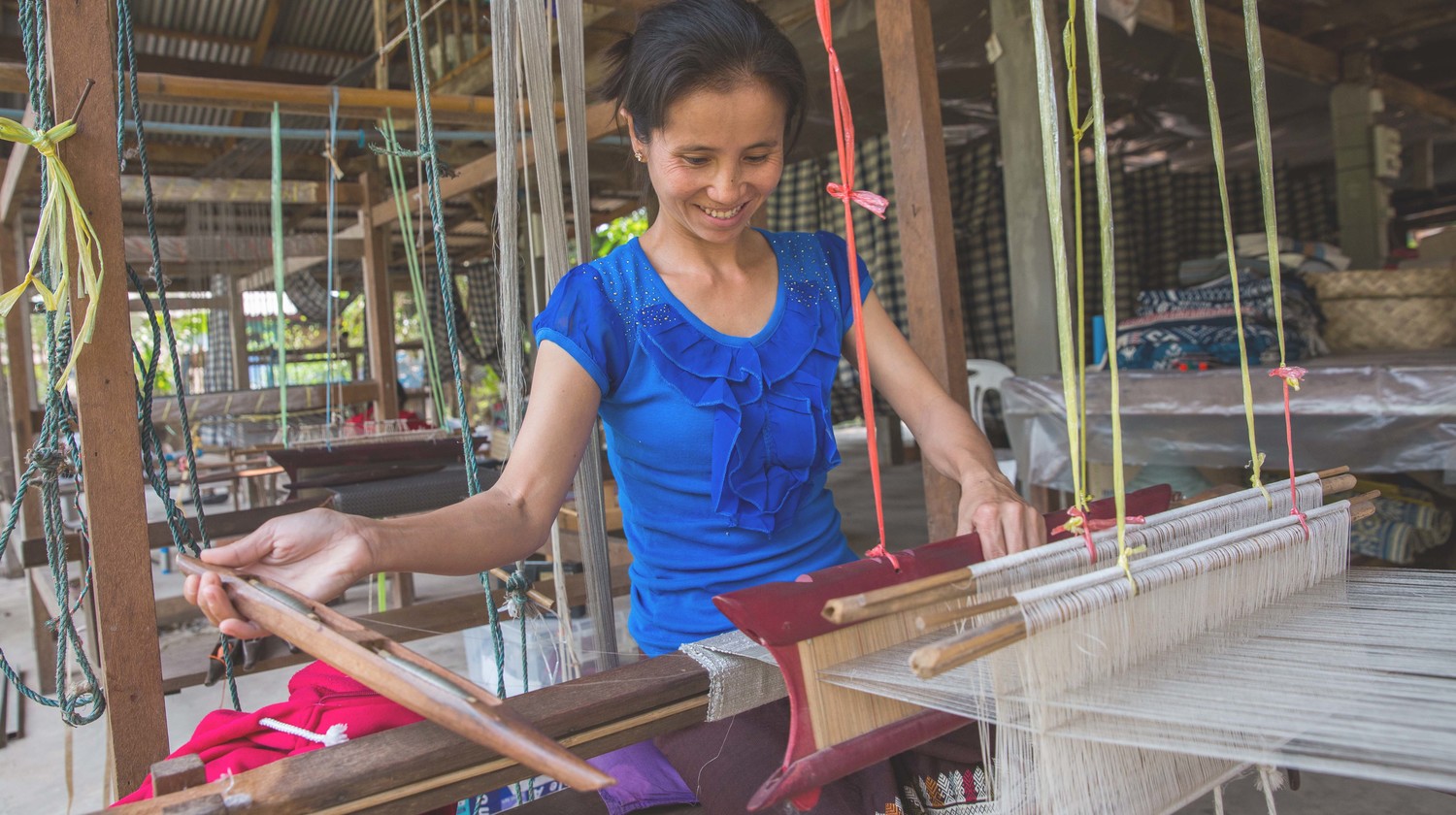Cotton has been grown in Laos for centuries...

Growing Their Cotton

Transforming Cotton Fiber Into Cotton Cloth

Natural Textile Dyes
To this day, most cotton is dyed with natural, plant-based dyes, and although chemical dyes are becoming more popular, TaiBaan aims to preserve and promote the tradition of natural textile dyes in Laos.
Most TaiBaan products use natural dyes. The weaving groups which are new to silkworm cultivation and dye production use a mixture of Lao silk and Vietnamese and Chinese silk and chemically dyed yarn. To help these groups transition to natural dyes, TaiBaan facilitates learning exchanges, enabling weavers and dyers to share techniques, skills and information. In the future TaiBaan hopes to produce and sell naturally dyed products exclusively.

Natural Dyeing: A Demanding Art
Traditional Lao weavers use natural dyes derived from seeds, leaves, roots, flowers, fruits, bark, and insect resin. Master dyers know which substance, or combination of substances, will yield specific colors, and have expert control over the results. The process requires great skill: the yarn must be dipped in dye and dried several times in succession to achieve the desired degree of evenness and color intensity. The process may take two days to a week, not counting the time needed to collect, dry, and shred the roots, leaves, or fruits and then boil, ferment and rest them to create dyes: these processes can take months. Accordingly, naturally dyed yarn and woven products generally command higher prices than products made from chemically dyed yarn.
Making indigo dye is an ancient art and steeped in myths. Menstruating women are kept away from the indigo jars for fear of upsetting the “indigo spirit” and rendering the dye useless.
Indigo dye is made from the leaves and shoots of the “kharm” plant, which grows in many areas in Laos. Getting the raw materials for indigo may be easy, but making it is an art. It involves fermentation of the “kharm” and keeping the mixture in air-tight jars at the required temperature. Natural indigo contains no chemicals or toxic metals and wearing fabrics dyed with indigo is believed to be good for the skin.

